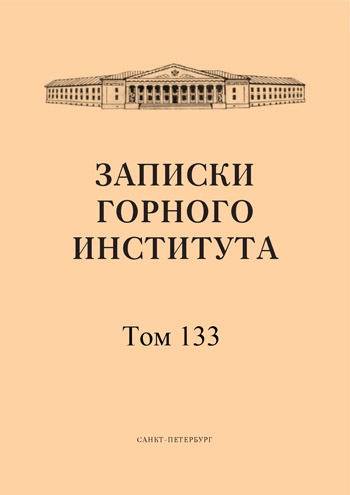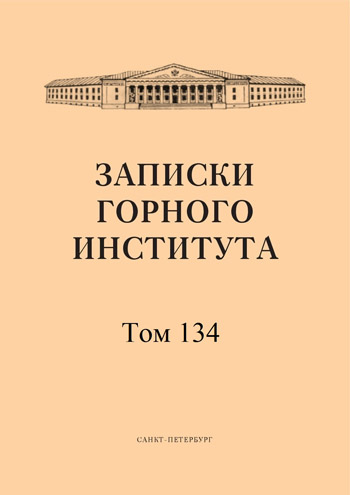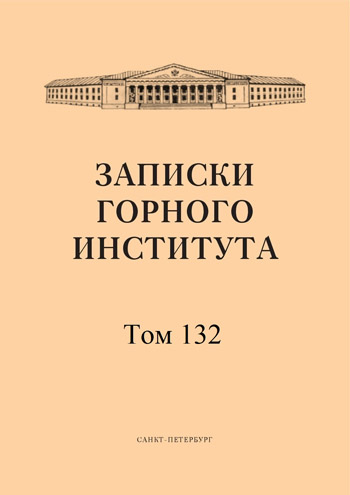-
Date submitted1991-10-04
-
Date accepted1991-12-08
-
Date published1992-07-07
Valery Lomtadze is 80 years old
- Authors:
- Department staff
Description of the working life of Doctor of Geological and Mineralogical Sciences, Professor, Honored Scientist of the Russian Federation Valery D. Lomtadze.
-
Date submitted1991-10-01
-
Date accepted1991-12-13
-
Date published1992-07-07
Technogenic geological phenomena and rational use of the geological environment
- Authors:
- V. D. Lomtadze
As we know, the natural environment includes the atmosphere, hydrosphere, biosphere and geosphere (geological environment). Each of these spheres is studied by special sciences, specialists of a certain profile.
-
Date submitted1991-10-21
-
Date accepted1991-12-12
-
Date published1992-07-07
Geologic phenomena - a reliable source of information on rock strength
- Authors:
- I. P. Ivanov
The growing scale of construction leads to an increase in the size of the zones of influence of structures on the geological environment, which creates significant difficulties in assessing the physical and mechanical properties of rocks, taking into account their heterogeneity and anisotropy.
-
Date submitted1991-10-14
-
Date accepted1991-12-20
-
Date published1992-07-07
Engineering and geological aspects of the role of the biotic component in the operation of tailings dumps at Phosphorit PA
- Authors:
- R. E. Dashko
- E. S. Rudenko
Operation of industrial hydraulic engineering structures such as tailings ponds at the PO Phosphorite involves the solution of a set of problems associated with the forecast of the impact of these structures on the geological environment, as well as to ensure the reliability of their functioning and, above all, stability for the entire period of operation.
-
Date submitted1991-10-05
-
Date accepted1991-12-03
-
Date published1992-07-07
Theory and practice of engineering-geological zoning and typification of engineering-geological conditions
- Authors:
- Ya. V. Neizvestnov
In the development of the theory and practice of engineering-geological zoning, two stages are distinguished. At the first of them (the 60-80s of our century) engineering-geological zoning was considered as a means of assessing the engineering-geological conditions of the continents, sometimes together with their underwater continuation to the shelf
-
Date submitted1991-10-14
-
Date accepted1991-12-15
-
Date published1992-07-07
Geoecology and engineering geology of the seabed (based on the materials of the geoecological cruise on the research vessel "Akademik Krylov")
- Authors:
- M. S. Zakharov
On the initiative of the All-Union Geological Institute named after A.P.Karpinsky, supported by the Central Scientific Research Institute of Shipbuilding named after A.N.Krylov, from September 5 to 12, 1990 were conducted experimental complex geo-ecological studies in the eastern part of the Gulf of Finland.
-
Date submitted1991-10-23
-
Date accepted1991-12-07
-
Date published1992-07-07
Engineering and geological assessment of conditions for open-pit development of Iksinskoye bauxite deposit
- Authors:
- V. N. Novozhilov
- A. E. Shevchenko
The Iksinskoye bauxite deposit was discovered in 1949 and explored in 1950-1953. The Northern Complex Geological Exploration Expedition of the North-Western Geological Department.
-
Date submitted1991-10-13
-
Date accepted1991-12-18
-
Date published1992-07-07
On transformation of composition and properties of lake-glacial sediments in the zone of influence of industrial hydrotechnical facilities (Phosphorit Plant)
- Authors:
- Yu. G. Vishnevskaya
The need to study changes in the composition and properties of the city in the area of placement of tailing dumps of PA Phosphorite is associated with the problem of temporary prediction of the stability of the base and slopes of these structures, the operation of which has been carried out since 1963.
-
Date submitted1991-10-23
-
Date accepted1991-12-08
-
Date published1992-07-07
Engineering and geological assessment of anthropogenic sediments of the beach zone of the ANOF-2 tailing dump of Apatit PA
- Authors:
- L. P. Kononova
Active impact of industrial activity on rocks creates huge masses of artificial formations, diverse in composition and properties. Attempts to classify the types of technogenic rocks are known in the literature. According to the studies of Moscow University, technogenic formations are subdivided into technogenic-altered, technogenic-redeposited and technogenic-formed.
-
Date submitted1991-10-19
-
Date accepted1991-12-14
-
Date published1992-07-07
Characterization of the geodynamic environment of Narva Bay using morphodynamic analysis
- Authors:
- A. I. Vasekha
At present, against the background of growing interest in the protection of the geological environment, the role of engineering-geological research in medium-scale geological mapping of land and water areas is underestimated.
-
Date submitted1991-10-24
-
Date accepted1991-12-18
-
Date published1992-07-07
Quantitative assessment and prediction of roof stability of mine workings
- Authors:
- A. I. Arnautov
Oil shale is an important promising energy-technological raw material due to the increasing scarcity of these resources in the European part of Russia.
-
Date submitted1991-10-04
-
Date accepted1991-12-19
-
Date published1992-07-07
Formation of engineering-geological conditions of deep-water nodule areas of the Clarion-Clipperton Zone of the Pacific Ocean
- Authors:
- A. V. Kondratenko
- Ya. V. Neizvestnov
Under the formation of engineering-geological conditions we understand the processes of occurrence and history of natural components of the system and their distribution in space, reflected in the patterns of variability and distribution of heterogeneities of properties of these components.
-
Date submitted1991-10-06
-
Date accepted1991-12-07
-
Date published1992-07-07
Analysis of deformation features of pioneer and reclamation dams on a weak base (Apatit tailings dump ANOF-2)
- Authors:
- T. Yu. Skvortsova
A characteristic feature of any tailings storage facility, unlike other types of engineering structures, is that all structural elements of the storage facility: pioneer dams (thrust prisms) and reclamation slopes - constitute a single flexible system, the reliability of operation of which depends little on the uneven development of deformations of its elements, because the technology of construction of the storage facility is a controlled process.
-
Date submitted1991-10-20
-
Date accepted1991-12-09
-
Date published1992-07-07
Russian and foreign geological literature in the Rare Books Department of the Main Library of the Leningrad Mining Institute
- Authors:
- V. G. Bauman
The article continues the series of publications in "Notes of the Leningrad Mining Institute" and interdepartmental thematic collections, aimed at popularizing the collection of the Rare Books Department (RBD) of the Main Library (ML) of LGI, the oldest mining-technical library of the country, and attracting attention to rare and valuable editions of works of both Russian and foreign authors of all those interested in the history of geological knowledge.


